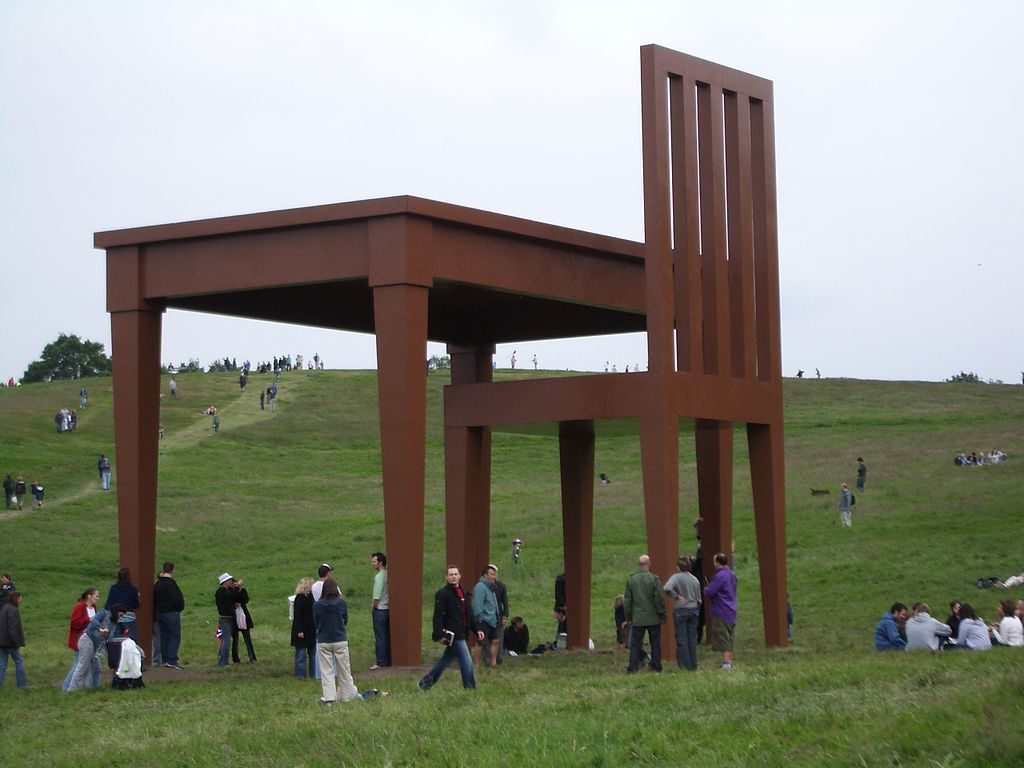I’ve been thinking about world building for very small characters or for normal sized characters living with very large peoples (giants).
On the whole, we tend to treat races as simply funny looking humans. When the party goes to the bar, they simply order a drink. How do the dwarf, halfling, and gnome characters deal with the fact that the bar was constructed for humans? Is there a step up at the bar that enables the shorter characters to compensate for their shortness relative to the bar? Why should there be?
Height difference in real life
We have wildly different heights in real life. However, everything is designed for people of “average size”. If you are very short, you might have to buy only children’s clothes. If you are very tall or rather plump (as I am), you may find that chairs don’t have enough leg room, most shops don’t carry clothes in your size (and those that do charge a lot of money), and that some doorways require you to duck to get through them. That last one does not happen very often but it has happened.
If that happens in our world where variety in height and size is common might it also be an issue in a world where whole races of different sizes exist? Might that mean, for example, that humans would struggle in a dwarven bar but a halfling would feel right at home? Would society become stratified on size issues?
In real life issues such as race, skin colour, socio-economic status, accent, sub-culture, gender identification, sexual orientation, music tastes, and a whole load of other issues tend to separate us. In the more enlightened parts of the world, these differences are celebrated but in some backwaters the opposite is true.
Economic adaptations
In a town that takes trade from passing adventurers, it would be an economic advantage to accommodate races of different sizes. So a wise tavern owner might put out tables and chairs that are of different sizes. Or, maybe, they will adapt the seating to put everyone on a similar level with low, medium, and high seated chairs.
If the setting happens to have really extreme size differences, maybe some tables have tiny tables with tiny chairs in the middle. Might civic authorities tend to make or even force adaptations for their shorter voters? Perhaps steps are required to be of no more than a certain height? Would door handles tend towards being lower down? If so, what about the taller than average voters?
Something as simple as a door handle might undergo a very different evolution than in our world. Perhaps, in a world with wildly different racial heights, doors have two handles (one high and one low) either of which will open the door. How would that work?
Perhaps public buildings tend to have very large doors with smaller doors set inside them and very small doors set inside those. Aside from the need to carefully lock all three doors, and the added cost of hinges, this could be one way a society overcomes radical height differences.
Sizeism
What about shops or villages that refuse to accommodate taller or shorter peoples? Could sizeism be a serious issue?
Perhaps sizeism is a more obvious extension of racism. The sort of underlying prejudice that comes not from hate but from failing to consider the needs of others.
In a sizeist world, people of the prefered height (let’s just call them average sized people) would have a significant advantage in life. How might that play out? Would it mean that the height advantage leaves the very short or very tall with fewer work and education opportunities? And if so, would hight become an indicator of assumed wealth or ability?
Might “average” sized people be seen as inherently better through unconscious bias? How might very small characters deal with these disadvantages?
Might being very tall or very short be seen as a disability or is it just a cultural difference?
Is there a “normal” door and then, hidden out of the way the “midget hatch” which shorter characters slink into buildings through. This could become a way for establishments to delineate who they would prefer to welcome.
Tools for very small characters
One way that very small characters might adapt to a world designed for much taller people would be to create tools to help them get higher up.
Maybe your sword and sorcery setting has shops that do a good trade in indoor climbing equipment and grappling hooks? Perhaps this shop also sells stilts, grabbers, and folding step ladders too. Maybe they sell the local taverns some form of a stylish booster seat for their chairs.
In a sci-fi setting, maybe very short characters tend to carry hover disks that act as floating platforms with a maximum height of a few meters. Maybe some innovative short character started selling drones with serious lift at lower levels, a comfortable seat, and small controls. Maybe very small characters fly everywhere.
Toilets
In a setting where the loo is little more than a hole in the ground, this might not be much of an issue. However, like the issue of space alien toilets, might metropolitan areas have six sets of loos – one for each gender of each size category?
How would very small characters deal with getting onto and using a toilet designed for people twice their size? Would you see the same sorts of adaptations we see for children or disabled people?
In a sizeist world, are the very short expected to use the hole at the back while the taller people can enjoy the porcelain comforts of the indoor loo?
Gnomes, for example
Take, for example, gnomes. While the Pathfinder source material has a lot to say about gnomish culture, gnome attitudes, and size, nothing seems to address the issues of hight differences in practical terms. After all, if there existed a people group tending to no more than three foot tall (91 cm), that could create all sorts of physical barriers.
How does someone that short order a beer at the bar? How do they open a window? What about shopping – items on the top shelf would be more than an entire body length above them. How might society change in response to such issues?
In something like Dungeons and Dragons or Pathfinder, this is something the GM is going to want to maybe think about. Simple clues like a lack of steps in front of the bar could be a big cultural clue as to how the very small characters in the party might expect to be treated in this village.
Why worry about such details?
You might say that these are not important details. You might be right. However, to not consider them would be to miss out on deepening your world and exploring the many ways that your very small character relates to the world.
By simply realising that there could be sized based prejudice in your setting opens up all sorts of story-based possibilities. Entire avenues of character development and expression can become possible.
Last and by no means least, if you show that you have thought about size it makes your setting seem all the more real.

Image Credit: By User:Justinc [CC BY-SA 2.0 ], from Wikimedia Commons

